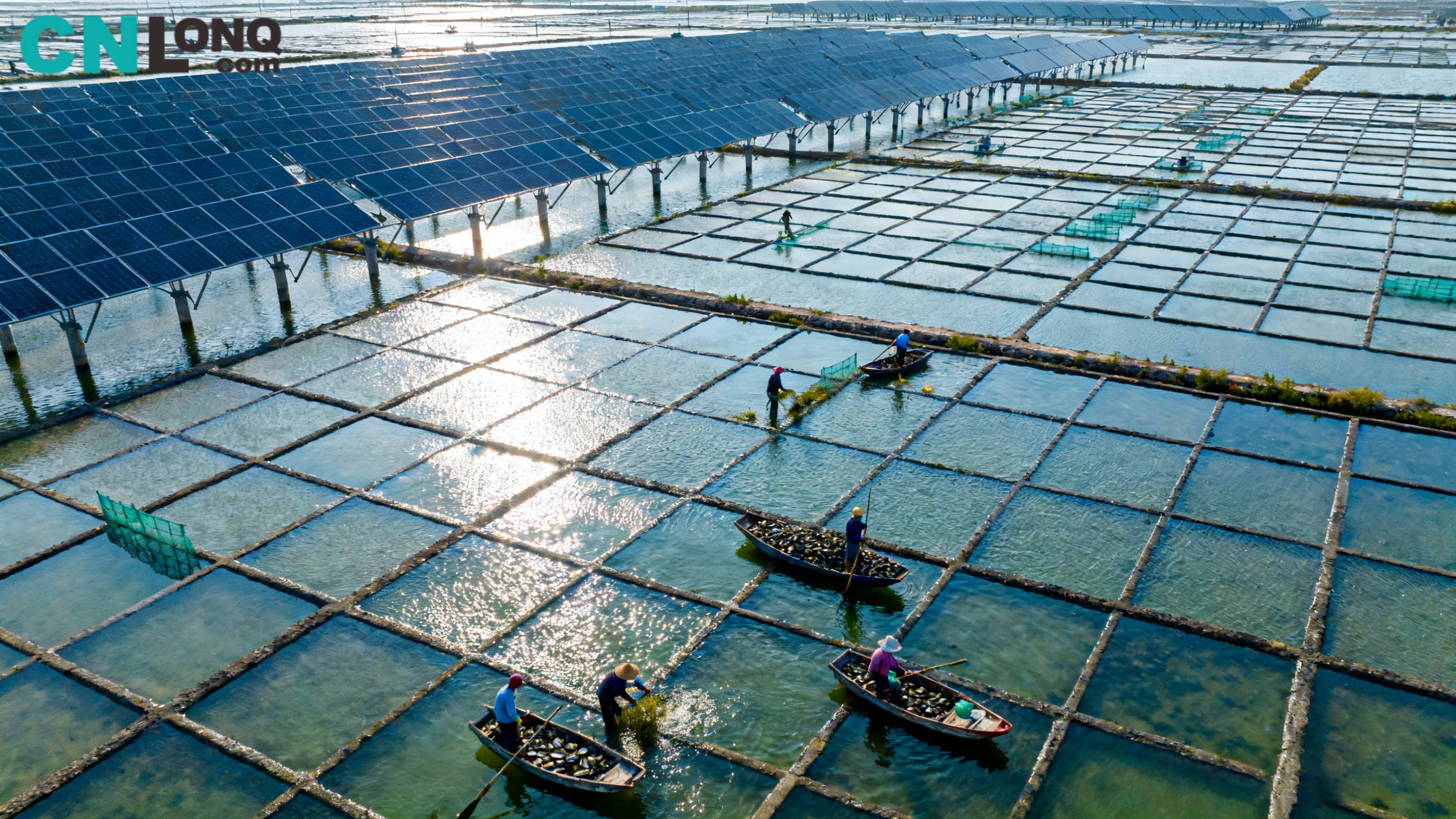
- English
- Español
- Português
- русский
- Français
- 日本語
- Deutsch
- tiếng Việt
- Italiano
- Nederlands
- ภาษาไทย
- Polski
- 한국어
- Svenska
- magyar
- Malay
- বাংলা ভাষার
- Dansk
- Suomi
- हिन्दी
- Pilipino
- Türkçe
- Gaeilge
- العربية
- Indonesia
- Norsk
- تمل
- český
- ελληνικά
- український
- Javanese
- فارسی
- தமிழ்
- తెలుగు
- नेपाली
- Burmese
- български
- ລາວ
- Latine
- Қазақша
- Euskal
- Azərbaycan
- Slovenský jazyk
- Македонски
- Lietuvos
- Eesti Keel
- Română
- Slovenski
- मराठी
- Srpski језик
Total Investment of RMB 1.2 Billion! Xindao Qingkou Salt Field 250MW "Fishery-Solar Complementary" Project Breaks Ground
2025-10-20
Pioneering Integration of Renewable Energy and Modern Agriculture
Lianyungang, Jiangsu Province – A major boost to green energy development in eastern China was unveiled recently, as the 250MW "Fishery-Solar Complementary" PV composite project at Xindao Qingkou Salt Field officially broke ground. As Lianyungang’s latest large-scale new energy initiative, the project not only expands the scale of the city’s "fishery-solar complementary" model – a innovative approach that combines solar power generation with aquatic farming – but also sets a new benchmark for the integration of the global PV industry and modern agriculture.
Project Overview: Scale and Technical Highlights
Invested by Xindao Technology Group with a total budget of RMB 1.2 billion (approximately USD 165 million), the project is located in the core area of Qingkou Salt Field in Lianyungang. It will occupy around 4,250 mu (about 283 hectares) of existing aquaculture water areas to build a composite new energy base.
Key construction components include:
•A PV module array using advanced 630Wp double-sided, double-glass N-type PV panels (total 473,356 units), with a DC capacity of 298.2MW and an AC capacity of 250MW;
•Core power generation equipment such as inverters, combiner boxes, and transformers;
•One 220kV step-up substation, an energy storage system, and on-site maintenance roads.
With a construction period of 12 months, the project is scheduled to start operation in 2026. Once commissioned, it is expected to generate approximately 300 million kWh of on-grid electricity annually – enough to power hundreds of thousands of households for a year.
"Fishery-Solar Complementary": Dual Benefits of Energy and Agriculture
The core advantage of the project lies in its "fishery-solar complementary" model. Under this design, PV panels are installed above the surface of fish ponds, while standardized aquaculture (e.g., fish and shrimp farming) continues in the water below. This dual-use approach delivers multiple benefits:
•The PV array efficiently converts solar energy into electricity;
•The panels provide natural shading for the underwater ecosystem, improving water quality and creating a more suitable environment for aquatic life;
•Land use efficiency is increased by over 60%, as the same area supports both energy production and agriculture.
"This model achieves a 'win-win' of economic and ecological benefits," said a representative from Xindao Technology Group. "It deepens the integration of primary industry (agriculture) and secondary industry (energy), injecting green momentum into rural revitalization in the region."
Environmental Impact and Policy Alignment
In terms of environmental value, the project will significantly reduce fossil fuel consumption and greenhouse gas emissions once operational – a key contribution to China’s "dual carbon" goals (peak carbon emissions by 2030 and carbon neutrality by 2060). It also aligns with global efforts to transition to low-carbon energy systems.
Local government support has been critical to the project’s launch. An official from Lianyungang Economic and Technological Development Zone emphasized, "The smooth kickoff of this project is a result of collaboration between the government and enterprises. We will continue to optimize the business environment, provide full-range support for construction, and resolve any challenges promptly to ensure on-schedule operation."
Xindao Technology Group, a global leader in rare scattered metal materials, brings its expertise in advanced materials and system integration to this new energy venture – laying a solid foundation for the project’s high-quality development.
Industry Significance: A Model for Global PV Development
Notably, Qingkou Salt Field has emerged as a hub for "fishery-solar complementary" projects in Lianyungang, with previous large-scale initiatives by China Three Gorges Corporation and CR Power already in place. The Xindao project further strengthens the region’s new energy industrial cluster, accelerating the transition to a green and low-carbon energy structure.
Against the backdrop of impending global PV capacity regulation policies, composite projects like this – which balance ecological benefits and industrial value – are expected to become a key direction for the high-quality development of the global PV industry.
Editor’s Note: "Fishery-Solar Complementary" is a sustainable development model unique to China, which maximizes land and resource efficiency by combining solar power generation with aquatic farming. It has been recognized as an innovative solution for regions with abundant water resources but limited land for large-scale PV projects.




